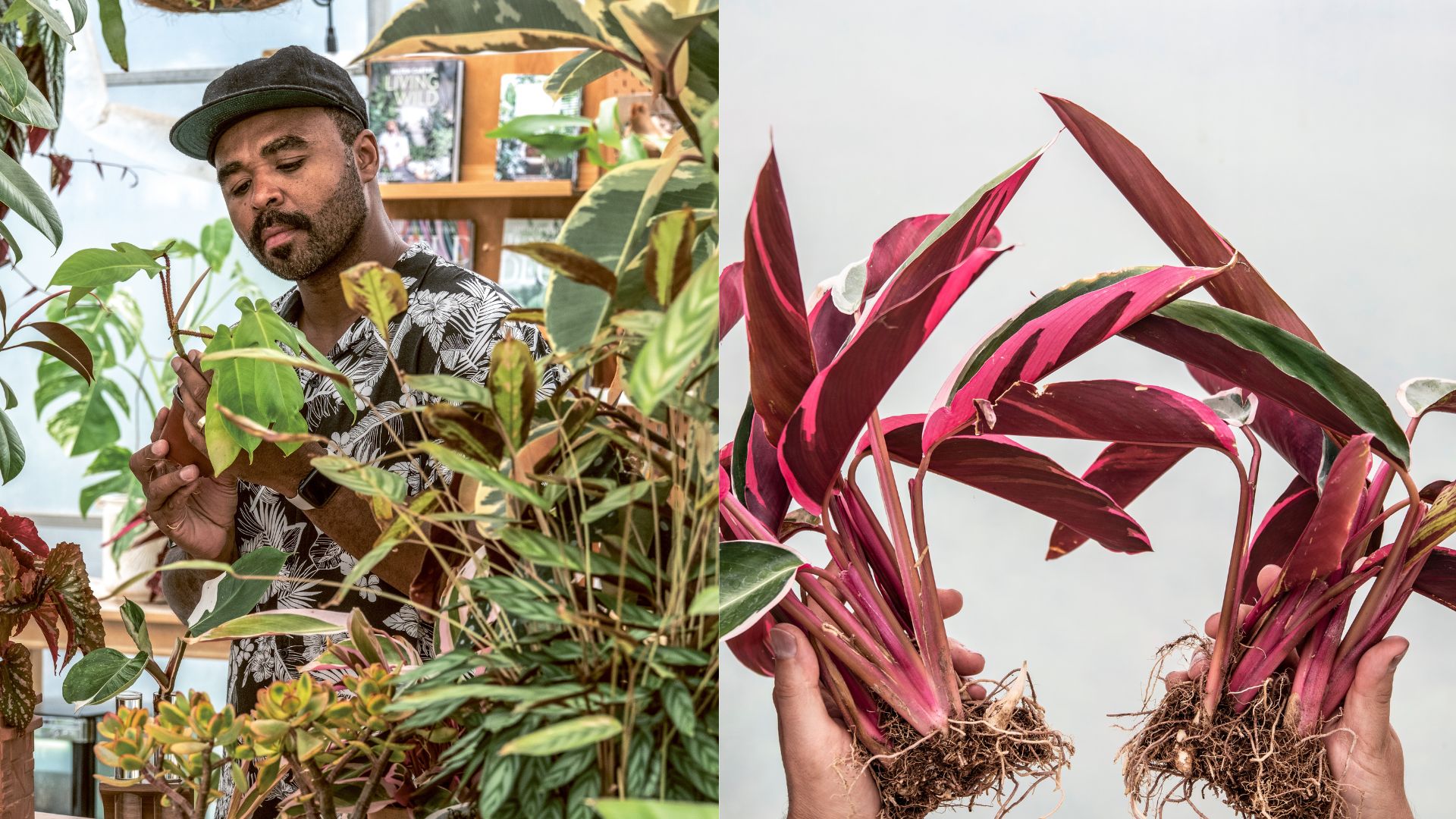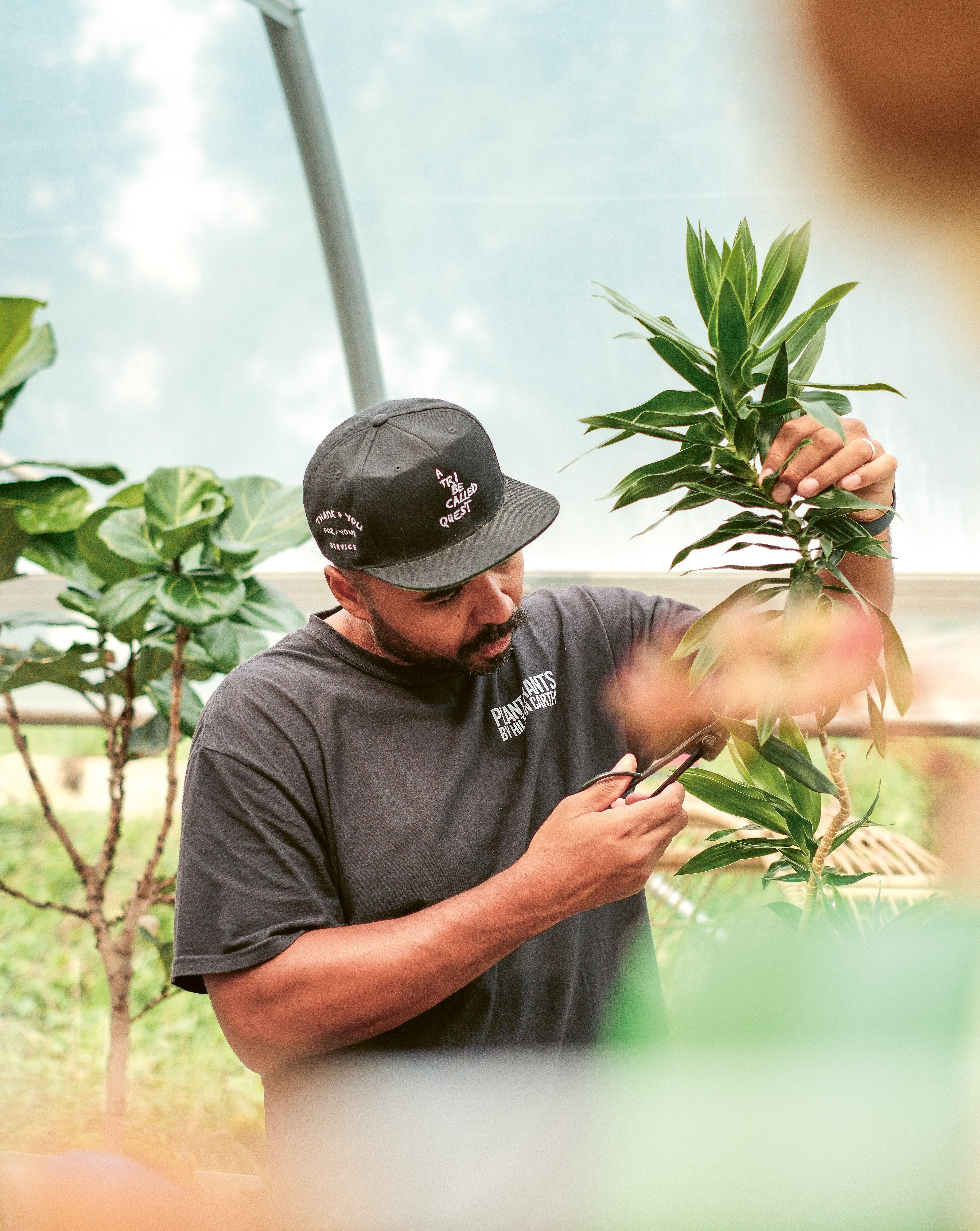Hilton Carter's Genius Propagation Trick Will Create New Plants While Helping Your "Overcrowded" Pots
Do you want to gift your most beloved houseplant to a loved one? Here is an easy propagation method you could use that doesn't rely on cutting your plant


'Perhaps what I love most about the practice of propagating is that you’re able to share a passion for plants with the ones you love,' Hilton Carter says in his new book, The Propagation Handbook. Hilton is a plant expert, interior stylist, author, and artist. His unwavering love for household plants began after he came across a fiddle-leaf fig, which he named 'Frank'. Since then, he has inspired many with his work and spread his wisdom on different plant hacks and methods — including houseplant propagation.
When it comes to indoor garden ideas, many people turn to propagating houseplants as a way of bringing new life into a space. It's no easy task and it is one that takes time, patience and understanding.
In his latest book, Hilton gives us a breakdown of what propagating entails and the different methods involved around it. 'It's a common experience that many of us find our way into plant parenting through propagation,' he says. 'A family member takes a cutting from a favorite plant and gifts it to someone else in the family, who then takes a cutting from that plant, and in that way it is handed down from one generation to the next'.
There are various ways to propagate houseplants, but one which stood out to me most from Hilton's book, was the foolproof 'Division and Separation' method.
A method that does not involve a sharp blade

'What if I were to tell you that not all propagation methods involve taking a sharp blade, cutting off a piece of the mother plant, and then sticking it into a rooting medium?' Hilton Carter writes. This process gives you the chance to divide and separate a plant into sections, 'immediately increasing the number of plants that you have'. It is also one of the most commonly used methods of propagation.
Hilton says when it comes to division and separation, 'the plant that you are propagating already has an established root system, making the process of propagation instantaneous'. Sounds like a dream right?
But let's not get too excited, shall we? As Hilton emphasizes that although most houseplants can be propagated through this process, just like any other method, there is 'no guarantee of success'.
The Livingetc newsletters are your inside source for what’s shaping interiors now - and what’s next. Discover trend forecasts, smart style ideas, and curated shopping inspiration that brings design to life. Subscribe today and stay ahead of the curve.
Why you should use this method

Hilton tells us there are three reasons you might want to use this method.
First off, he says this process increases 'the number of plants you have in your collection'. Secondly, it creates room in 'a pot that is becoming overcrowded'. Hilton says as plants mature, 'more shoots develop and grow, leading to competition for light and water because of the lack of sufficient space'.
Thirdly, you might want to try this method to save the healthy parts of a plant, which could be surrounded by other shoots that are damaged or unwell.
The best plants to be propagated through division and separation

Hilton says ferns, bromeliads, caladiums, alocasias, palms, goeppertias and calatheas, and air plants (Tillandsia)' are plants that are the easiest plants to propagate using this method.
'The process is very similar to repotting a plant and, just as with repotting, it’s best to wait until the soil of your plant is on the drier side,' he adds.
The 6 steps of propagating using division and separation

It's time...you want to take your favorite household plant and propagate it, without having to cut or tear through it.
So, what would be the best way to do it?
Here, Hilton takes us through 6 easy steps of propagating houseplants via division and separation or as he likes to call it 'divide and conquer'.
Step 1: 'If your plant is in a plastic pot, squeeze the sides to loosen the soil and roots. If your plant is potted in a planter made from a hard material, use a spade or trowel to pull the soil away from the sides of the pot. Firmly hold a portion of your plant at its base and begin to gently work it out of the pot,' Hilton notes.
Step 2: He says 'once the plant is removed from its pot, use your hands to loosen the soil around the roots. The goal here is to expose as much of the root system as possible so that you can separate the shoots of the plant'
Step 3: It is time to 'gently untangle the root system of each shoot. Plant roots can become intertwined, making it difficult to separate them. Don’t panic if a few roots snap in the process. You may even have to take a pair of shears or a knife and cut parts of the root system to separate one shoot from another,' he adds.
Step 4: 'Each separated section should have a healthy amount of roots, shoots, and leaves'.
Step 5: Now that you have separated the shoots, Hilton says the 'rest of the process is just like repotting a plant. Find a pot that is 2in/5cm larger in diameter than the root system of your shoot and fill the bottom third with potting mix'.
Step 6: Last, but not least, 'gently place a section of the divided plant in the pot, then cover the roots with more soil, patting it firmly into place and leaving the top 10 percent of the pot free of soil. Repeat with the other sections. Water them and place in a warm location with bright indirect light'.
And there you have it, you have successfully propagated your plant through the division and separation process.
'Caring for these plants shouldn’t be new to you, but be aware that their watering needs will be more frequent now that they are in smaller pots with less soil,' Hilton adds.

Faiza is the Renovation Editor at Livingetc. She previously worked for The Independent as a News Feature Writer, where she crafted lifestyle, entertainment, and news stories. She also worked as an Audience Editor for the newspaper for almost two years. Thriving in the busy newsroom, Faiza also spent her time crafting stories for Sky News as an SEO reporter, where she produced stories based on trending topics. Lifestyle and interior design have been areas of interest for her for some time, and as she advances in this field, she will continue to refine her skills in all aspects of design. Faiza has a background in SEO, social media, and reporting. Her passion for writing goes beyond her work as she loves all things poetry and creative writing.
